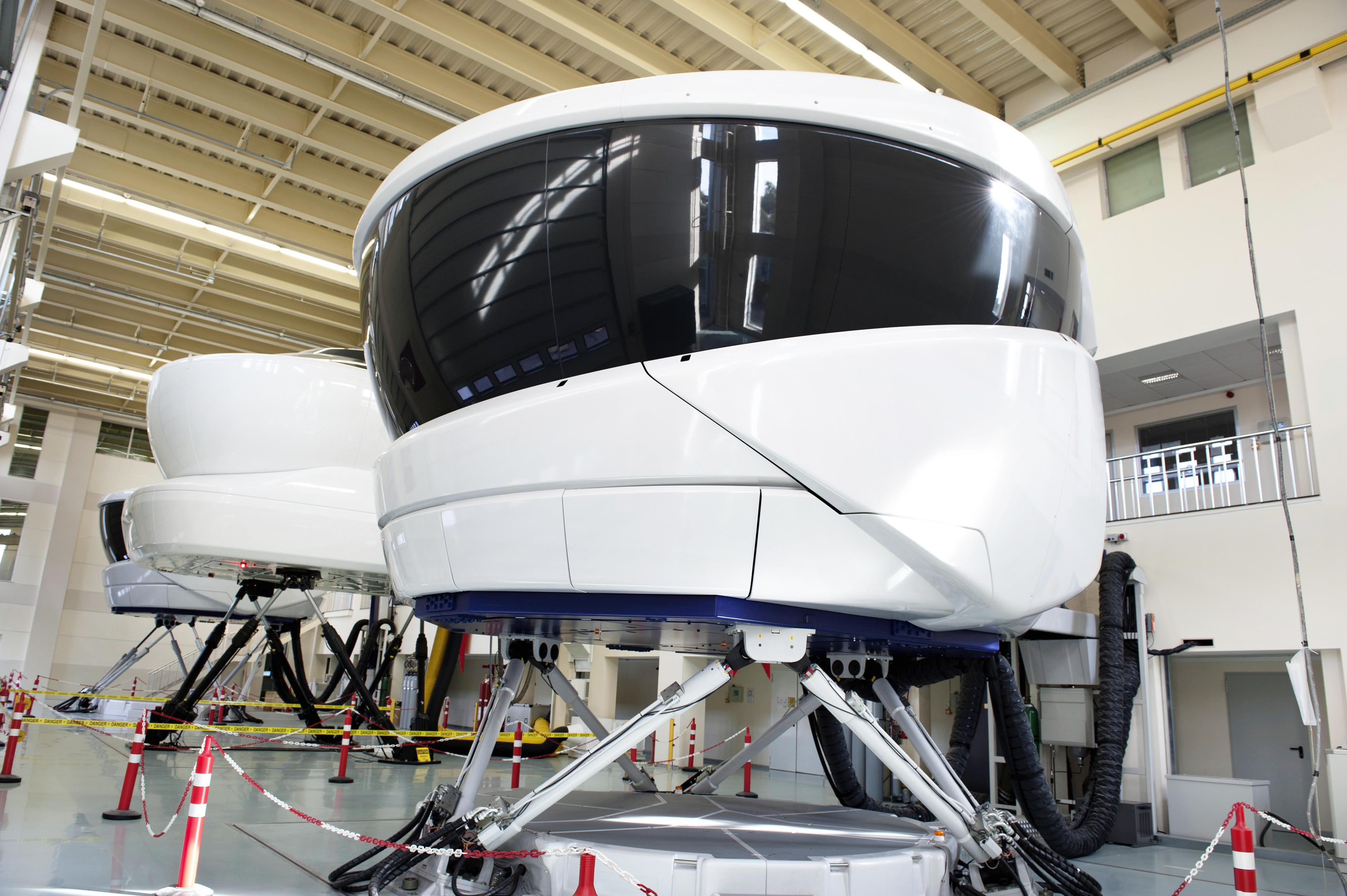We’ve written in the past about professional pilots’ extensive training, both theoretical and practical, before taking the controls of an aircraft for the first time. The practical bit deals with hypothetical situations that can and often do occur in the air, and a crucial component of this is accomplished by the use of systems which reproduce a flight deck as faithfully and realistically as possible where a pilot can rehearse all possible manoeuvres, from take-off to landing. The most obvious advantage to simulators is that making mistakes in here doesn’t endanger anyone. Pilots can also prepare for extreme situations, however unlikely they may be. They can do this as many times as necessary until they have pinned down to the millimetre how to proceed. And obviously, operating a flight simulator is also vastly less expensive than practicing in a real cockpit.
Simulators are also known by their acronym FSTD (flight simulation training devices), and additionally, these are usually FFS‘s (full flight simulators or full-motion flight simulators), which replicate every aspect, detail and mechanism of a flight deck and its environment. The models in use these days are extremely realistic, and those who operate them feel the same movements they would experience inside a real aircraft.
Thanks to technological advances in the complex computer systems of virtual reality, these trainings stimulate pilots’ visual and auditory capabilities so much so that they feel they are really flying. The simulator exposes them to adverse conditions, including failures in the navigation system, storms, landing-gear problems, fire, etc. At the same time, the flight instructor has a number of functionalities with which to create these scenarios. All of this, at incredible levels of realism, aim to provide pilots with the highest possible level of expertise while at the helm of an aircraft.

A Brief History of Flight Simulators
For as long as aeronautics has existed there’s been a need to train pilots in an environment that’s safe yet at the same time replicates as much as possible any conceivable situation. One of the first simulators in history was the “Sanders Teacher“, a model aeroplane mounted on a joint, facing into the wind and able to tilt and turn. Looking back on it today, it might seem like a fairground attraction. In the first decade of the 20th century, a contraption that consisted of half a barrel stood in for an aircraft flight deck. It was mounted on a wooden structure that moved from the outside to create the sensation of flight.
New simulation systems continued to be developed during World War I, and in the inter-war period one of the most popular was the Link Trainer. Creator Ed Link developed a kind of blue box with pedals, levers, instruments and even wings that reproduced certain mechanical movements, and the instructor communicated by radio to make it more realistic.
The first electronic simulators came during World War II, thanks to the analogue computers of the time. Later, terrain simulation and the use of cameras to create a sense of flight began. But it was not until the 1960s that digital computers came into use. At the end of that decade, hydraulic actuators were developed, which controlled the various axes of motion.
It was from the 1970s onwards that cabins began to be used. The creation of a lens that projected views of the outside was able to substantially improve the actual sensation of flying. Finally in the 1980s, the projection of HD images became standard. This remains the basic technology that is still used today, although of course enhanced by technological advances.
But not all flight simulators are valid for pilot training. Others exist that are more recreational or used in video games. However, those used professionally require quality standards endorsed by the corresponding authority in each country. In Spain, the Aviation Safety and Security Agency is the body that certifies the suitability of flight simulators or FSTD devices. Currently there are about a hundred of them licensed, including both civilian and military simulators and helicopter simulators.
In addition, pilots use flight simulators not only in the rating course for the relevant aircraft, but also in the constant training provided by the airlines to ensure that they always have the highest level of proficiency.

